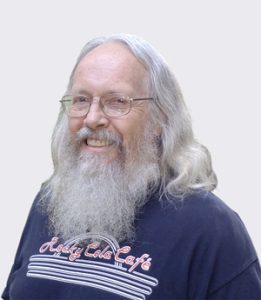The Robert E. Lee Military Academy Scandal – Part One
It’s hard to believe that La Crescenta had its own military academy, let alone one named for one of the opposing generals of our Civil War. Yet it was true. And a minor incident there spurred a scandal that attracted national attention.

president of the Historical Society
of the Crescenta Valley and loves local
history. Reach him at lawlerdad@yahoo.com.
The story starts with the La Crescenta Hotel, a grand old resort hotel on the northwest corner of Rosemont Avenue and Foothill Boulevard. Built in 1888, it was massive – three-stories and 36 spacious rooms. It had served the community well, attracting rich and famous guests. But by the mid-’20s it had begun its decline.
It was sold to the Zimmer family, who took up residence in the huge empty structure. Mr. Zimmer built a small real estate office in front on Foothill. In 1929, perhaps the stock market crash made them think they could do better financially by renting the massive hotel out.
They rented it to Major Richard Cannon to become the Robert E. Lee Military Academy of La Crescenta. Cannon hired some workers to fix up the place and moved his 90 pupils in. He immediately had a couple of small problems, nothing unusual for an operation of this size. Two of the workers he had hired found that their paychecks had bounced. It wasn’t a huge amount, $237 on one and $230 on the other, but complaints were made to the district attorney’s office. At the same time, representative from the Health Department made a routine inspection of the new school. They found several inadequately washed pots in the kitchen and cited Cannon. Cannon made good on the checks and washed the pots. But he would still have to go before Judge Dyer in Montrose to clear the charges, and it was not expected to be a big deal.
But it was a big deal because Major Richard Cannon was the son of one of the most divisive political figures of that time, Bishop James Cannon, the sanctified leader of the Prohibition Movement. By 1929, Prohibition was tearing the country apart. And the fact that Major Richard Cannon had used his kinship to his father in advertising for his military academy brought the immediate attention of the media.
But who exactly was this Bishop James Cannon? He was a leader in the Methodist Episcopal Church South, a pro-slavery branch of the Methodist Church that split off just before the Civil War and was based in the southern states. Bishop Cannon rose to power on the wave of the Temperance Movement and when Prohibition was enacted in 1920 Cannon soon became the voice and face of Prohibition. He wielded incredible influence in politics. H.L. Mencken wrote of him: “Congress was his troop of Boy Scouts and Presidents trembled whenever his name was mentioned.”
But Cannon was also a vicious and vocal racist. He hated the usual suspects – Jews, Blacks and immigrants – but saved his most vicious attacks for Catholics.
“The mother of ignorance, superstition, intolerance, and sin” was Cannon’s judgment on Catholicism. (Note the irony on “intolerance.”)
So when the New York Catholic anti-Prohibition Al Smith ran against Herbert Hoover in the 1928 Presidential election, Cannon went into full attack mode. He called Smith “the cocktail President” and ranted at voters that Al Smith represented “Italians, Sicilians, Poles and Russian Jews. That kind has given us a stomachache! We have been unable to assimilate such people in our national life, so we shut the door on them. But Smith says, ‘Give me that kind of people.’ He wants the kind of dirty people you find today on the sidewalks of New York!”
Strong stuff, but it worked and Al Smith was defeated.
Despite the growing resentment against Prohibition, Cannon continued to wield political power. But he was accumulating political enemies. Unfortunately for him, Bishop Cannon was a man with many skeletons in his closet. In 1929, his scandals were just beginning to break open. So when he showed up at the tiny Montrose court in defense of his son, he was followed by a phalanx of reporters.
Next week, the kerfuffle in Montrose.
